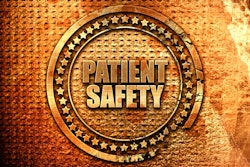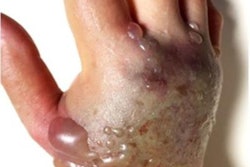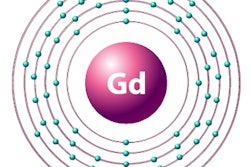
Researchers from Vienna have found that using a "fast-track allergy workup" can help prevent pediatric patients from experiencing adverse allergic reactions in follow-up gadolinium-enhanced MRI scans. They published their findings on 3 April in PLOS One.
The researchers used either a skin prick test or injected a series of gadolinium-based contrast agents (GBCAs) under strict surveillance into pediatric patients, if they reacted poorly in an initial contrast-enhanced MRI scan. Both approaches helped to identify a GBCA the children could tolerate, and subsequent MRI scans were performed without incident.
"A fast-track allergy workup can help to distinguish nonallergic and allergic reactions and to identify a well-tolerated GBCA, thus avoiding unnecessary premedication for subsequent GBCA administrations," wrote lead author Dr. Azadeh Hojreh and colleagues from the Medical University of Vienna.
Pediatric patients with chronic conditions often require multiple GBCA-enhanced MRI scans for monitoring. But if they experience a reaction to gadolinium contrast, steps must be taken to avoid allergic reactions, given that the frequency of a second such event is greater in patients with a previous adverse event.
At the Medical University of Vienna, a skin prick test is typically performed with trace levels of four GBCAs to predetermine an allergic reaction and to choose an alternative GBCA, if necessary. The following are the most frequently administered GBCAs at the facility:
- Gadobenate dimeglumine (MultiHance, Bracco Imaging)
- Gadoteridol (ProHance, Bracco)
- Gadoterate meglumine (Dotarem, Guerbet)
- Gadobutrol (Gadavist, Bayer HealthCare)
An alternative to the skin prick test is the "intravenous provocation test" in which a routine dose of each GBCA is administered under strict surveillance in case of an anaphylactic reaction. Patients are observed for at least 120 minutes after the last GBCA administration, with vital signs taken at baseline and every 30 minutes. The process is preceded or followed by a placebo injection for comparison.
To determine the efficacy of their approaches, the researchers retrospectively found 2,109 patients (mean age, 7.86 ± 5.91 years) who underwent a total of 8,156 GBCA-enhanced MRI scans for intracranial lesions at their facility between January 2007 and December 2016. In their review, the researchers counted a total of 19 acute adverse reactions (0.23%) in 17 patients (0.81%). Two patients each had a second adverse reaction with another GBCA.
| GBCA administrations and patients with initial adverse reactions | ||
| GBCA | No. of administrations | No. of patients with adverse reactions (%) |
| Gadoterate meglumine | 6,530 | 13 (0.20%) |
| Gadobutrol | 512 | 1 (0.20%) |
| Gadobenate dimeglumine | 425 | 1 (0.24%) |
| Gadoteridol | 300 | 2 (0.67%) |
| Unknown GBCA | 357 | 2 (0.67%) |
Of the 17 patients who initially experienced an allergic reaction, 12 children underwent skin prick tests or intravenous provocation tests before their next GBCA-MRI. None of the dozen patients experienced an allergic reaction on their follow-up MRI, with at "least one well-tolerated GBCA identified in almost every tested patient," the authors wrote.
"In our patient collective with reported GBCA-associated adverse events, there was no confirmed allergic reaction to GBCA, either with skin prick tests or with intravenous provocation tests, although, the 0.23% incidence of GBCA-associated adverse events in our study was within the range of the published incidences in earlier pediatric studies," the researchers concluded. "The administration of the well-tolerated GBCA identified by intravenous provocation tests or skin prick tests in subsequent MRI examinations was uneventful."



















